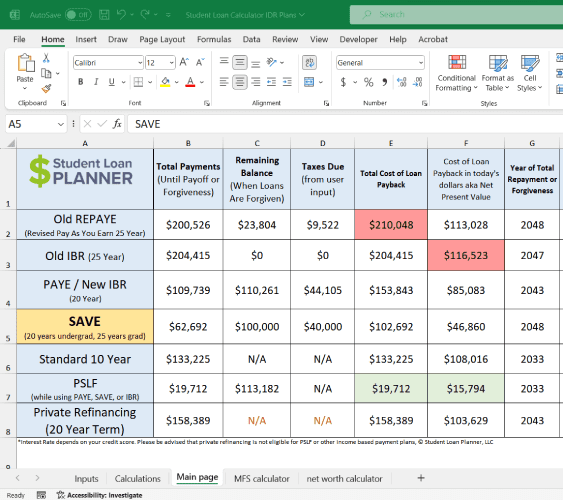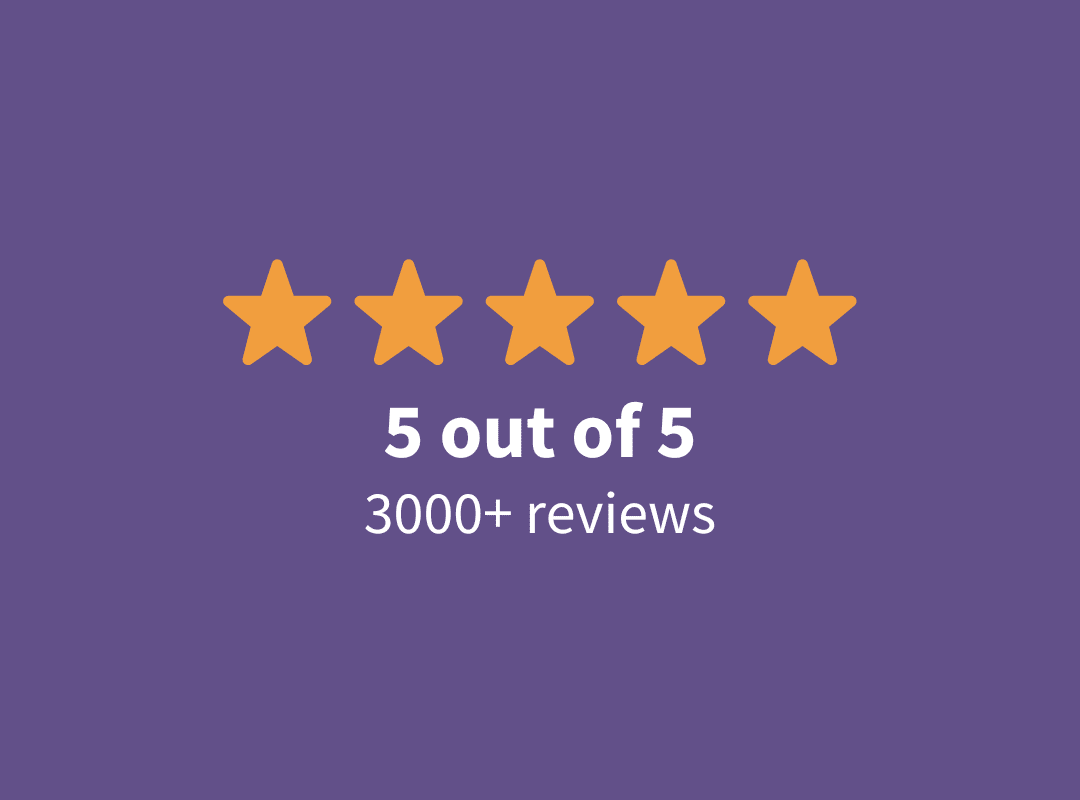As a physician assistant working in health care, you may score a higher-than-average salary but it’s likely your debt is higher-than-average, too. According to a 2019 report by the National Commission on Certification of Physician Assistants, the median salary for physician assistants is $105,000. The report also found the median student loan debt for physician assistants is $112,500.
Whenever student loan debt tends to be higher than salaries, any student loan forgiveness or repayment program can help. In this guide, we’ll cover physician assistant loan forgiveness and repayment programs.
Federal physician assistant loan forgiveness programs

If you have federal student loans from the federal government, you can take advantage of various repayment options that offer student loan forgiveness.
Public Service Loan Forgiveness
The Public Service Loan Forgiveness (PSLF) program was designed to help student loan borrowers working in the public sector. If you work at an eligible nonprofit or government agency, you could get your federal loans forgiven after making 120 qualifying payments on your education loans.
To qualify, you must work in the public sector for 10 years. After serving that period of time and making 120 payments, borrowers can fill out the Public Service Loan Forgiveness application.
While pursuing this option, submit your Employment Certification Form to manage your eligibility as well as your progress.
The good news is that this student loan repayment program has no tax consequences, so once your loans are forgiven, your financial obligations are done (many forgiven loans are considered taxable income, but not under PSLF).
The bad news is that the program has just started forgiving loans and the acceptance rate has been less than encouraging, with only 96 borrowers receiving loan forgiveness out of 33,000 applications.
If you stay on top of your employment, service obligations, and payments and continue to work with your loan servicer this could still be a viable option.
At Student Loan Planner®, we’ve worked with over 20 physician assistants who take advantage of the Revised Pay As You Earn (REPAYE) repayment option while pursuing Public Service Loan Forgiveness, which is now the Saving on a Valuable Education (SAVE) plan. In fact, when looking at the reasons physician assistants get in touch with us it’s because of the burden of choice. Reach out to us and see how you can get a custom plan.
Get Started With Our New IDR Calculator

Income-driven repayment plan
If you’re feeling overwhelmed with your federal student loan payments, you can opt for an income-driven repayment plan (IDR). Under IDR, borrowers can make their monthly payments more affordable by reducing payments to a smaller percentage of their discretionary income.
There are four repayment options under the IDR umbrella, Income-Based Repayment (IBR), Income-Contingent Repayment (ICR), Pay As You Earn (PAYE) and Saving on a Valuable Education (SAVE) which was formerly Revised Pay As You Earn (REPAYE), in addition to the percentage of discretionary income that makes up your monthly payments as well as repayment term.
Repayment Plan | % of Discretionary Income | Repayment Term |
IBR | 10% or 15% | 20 or 25 years |
ICR | 20% | 25 years |
PAYE | 10% | 20 years |
REPAYE | 10% | 20 or 25 years |
Eligibility for these programs vary so talk to your loan servicer to see if you qualify. The percentage or repayment term can vary depending on when you took out the loans or whether your loans are for undergraduate or graduate studies.
After making payments under these plans for the entire repayment period, if there is any amount left on your loans, they will be forgiven.
While that sounds ideal, it’s important to note that having lower minimum payments will result in paying a lot more in interest over time. You may think that’s not a big deal if you’re gunning for student loan forgiveness, however, under this plan (unlike PSLF), you do have to pay taxes on your forgiven balance though that's on hold until 2025. This option can still work, but we recommend setting up a savings account now to deal with any potential tax repercussions later on.
Another important thing to note when thinking about student loan interest is that when you choose SAVE, you get the most interest subsidies. For example, Student Loan Planner® has worked with a physician assistant with $140,000 in student loans, while making $90,000. We advised them to change from PAYE to REPAYE (before SAVE launched) for the additional interest subsidies. SAVE provides even greater benefits, as outlined on StudentAid.gov.
National Health Service Corps (NHSC)
The National Health Service Corps has a loan repayment program that is available to physician assistants in exchange for a two year service obligation in a designated Health Professional Shortage Area (HPSA).
The program will pay up to $30,000 to $50,000 for full-time service, depending on where you serve and is available to those with the following specialties:
- Adult
- Family
- Pediatric
- Women’s Health
- Geriatrics
- Mental Health & Psychiatry
To qualify, physician assistants must work under a primary care physician and have a certification or a degree from an accredited program. Additionally, you must have a certificate from the National Commission on Certification of Physician Assistants and be licensed and registered in the state you are serving in.
Armed Forces

If you’re interested in serving in the armed forces and use your physician assistant skillset there, you could benefit from this student loan repayment assistance program by being on active duty.
The Army can offer student loan repayment assistance of up to $65,000 and the National Guard covers up to $50,000.
You must serve for a specific term to qualify, which may vary depending on the program. Only federal student loans qualify for this program and employment opportunities may be limited. Currently, you can check out the Navy for physician assistant employment opportunities.
You can also consider the Health Professions Loan Repayment Program (HPLRP) which offers medical professionals award amounts of up to $40,000 per year. Federal and private student loans are eligible. How much you qualify for is determined by the amount of time you serve. You can get more info with your branch, such as the Navy or Air Force.
Indian Health Service Loan Repayment Program
Under the Indian Health Service Loan Repayment Program (IHS LRP), certified Physician Assistants can receive up to $50,000 in physician assistant loan forgiveness.
You must commit to two years of service in an eligible organization or approved site serving the Alaska Native and American Indian communities. To qualify, you must have a valid license and a degree.
State Loan Repayment Program
Aside from the federal loan forgiveness and repayment options, you could qualify for local options in your state if you work in underserved areas. For example, if you’re looking for physician assistant loan forgiveness New York or California, Iowa or Maine check individual state websites for programs available.
There are State Loan Repayment Programs (SLRP) from The Health Resources and Services Administration (HRSA) that work with over 30 states to support their loan forgiveness and repayment programs.
Physician assistants must work in Health Professional Shortage Areas (HPSA) and serve for at least two years, potentially more depending on the contract.
In order to be eligible, physician assistants must have one of the following specialties:
- Adult
- Family
- Pediatrics
- Psychiatry/mental health
- Geriatrics
- Women’s health
Qualifications and specialties can vary from state to state. To see if your state offers physician assistant loan forgiveness, check out your state’s local SLRP contact.
Refinancing
Many of the physician assistant loan forgiveness or repayment programs are associated with certain types of jobs or are specific to certain areas. If you don’t qualify for those programs, you can get a different form of student loan repayment assistance and get a lower interest rate through refinancing.
When you refinance your student loans with a lender you apply for a new loan with a new interest rate and new repayment term. Ideally, you can shave off a few percentage points and save thousands of dollars in interest.
If you have good credit, a good salary and stable employment, refinancing may help you with your student loan repayment journey.
One thing to note though is that once you refinance, your loans become private so any of the federal protections you once had with your Direct Loans are now gone. Be fairly certain you won’t pursue student loan forgiveness through PSLF or another program, before jumping on refinancing your federal student loans. If you feel this is the best option for you, check out the cash back bonuses available through refinancing.
Get started
Take action on your student loans and look at any physician assistant loan forgiveness and repayment options in your state. Then weigh the pros and cons of the various loan forgiveness options available against refinancing. If you have a private loan, you may be fewer options. You can also check to see if your employer or prospective employer offers any student loan assistance options.
Need help determining what’s the best fit for your unique situation? Get in touch for a student loan consultation.
Not sure what to do with your student loans?
Take our 11 question quiz to get a personalized recommendation for 2024 on whether you should pursue PSLF, Biden’s New IDR plan, or refinancing (including the one lender we think could give you the best rate).

Comments are closed.